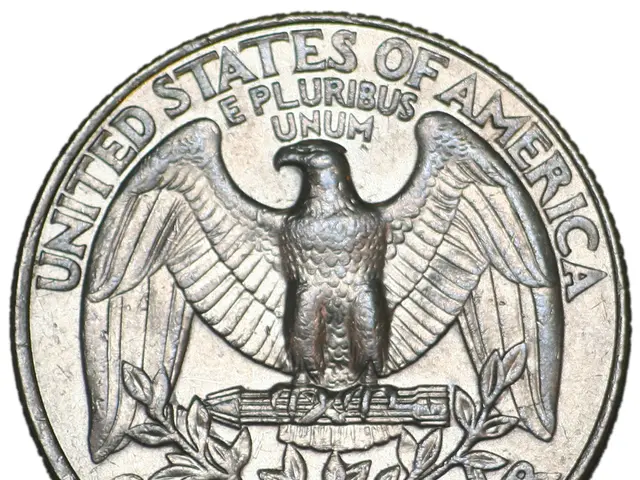China adopts aggressive strategy for debt recovery
China: A Shift from Generosity to Demands, Leaving Central Asian Nations in a Debt Catch-22
Things have changed for China, going from being the world's most generous lender to the globe's toughest debt collector. Central Asian states find themselves in hot water, owing billions to Chinese entities, but the strategic value of these nations to Beijing is preventing heavy-handed repayment tactics.
The Australia-based Lowy Institute's report, Peak Repayment: China's Global Lending Spree, charts China's transformation from "lead bilateral banker to chief debt collector of the developing world." The report illustrates how China's extensive lending backed by its Belt & Road Initiative (BRI) from 2013-2018 is now poised to impose serious fiscal pain on recipients. Developing nations, many labeled as the "world's poorest and most vulnerable," will allegedly owe $22 billion to China by 2025.
China has transformed from a capital provider to a financial drain on developing country budgets as debt servicing costs on BRI projects from the 2010s now surpass the disbursements of new loans. In 2012, China was a fiscal drain on 18 developing countries, but by 2023, the number climbed to 60. The net flows to developing countries dropped to a negative $34 billion in 2024.
At the start of 2024, Central Asian states collectively owed Chinese state entities around $20 billion, with Kazakhstan's share being $9.2 billion. Kyrgyzstan and Uzbekistan each owed nearly $4 billion, while Tajikistan owed China about $3 billion.
The debt amounts for Kazakhstan and Uzbekistan appear manageable considering these nations' overall GDP numbers, according to economists. However, Kyrgyzstan and Tajikistan seem like strong candidates for falling into China's debt trap. Turkmenistan's status as a debtor is hazy due to the country's secretive governing system, but Ashgabat, at the same time, is the only Central Asian state boasting a trade surplus with Beijing owing to its immense natural gas exports.
Several factors contribute to China's transformation from lender to debt collector, including the slowdown of China's domestic economy. Yet, the current debt collection surge is also a natural consequence of the terms of many BRI loans, which contained grace periods of up to five years and compressed repayment timelines. Since China's BRI lending peak in the mid-2010s, these grace periods began expiring in the early 2020s, resulting in a crisis period for developing country repayments to China.
Analysts at the Lowy Institute seem skeptical about China pressuring Central Asian states. The report reveals that Beijing is still extending loans to "strategic and resource critical partners" like Kazakhstan, Kyrgyzstan, and Tajikistan.
This change in Chinese lending behavior may restrict the ability of developing nations, including Central Asian states, to meet their growth targets, reduce poverty rates, and address global-warming-related issues. The burden from Chinese debts coming due is part of a broader set of severe challenges, particularly for poor and vulnerable economies. "An increasingly isolationist United States and a distracted Europe are withdrawing or sharply cutting their global aid support," the report states. "Reliant on an open, rules-based global trading system, developing economies must also confront the effects of new trade-war shocks and the prospect of punitive US tariffs being imposed against them."
China's actions regarding debt recovery could dent its image. An investigative report by Uzbek outlet Anhor.uz published on June 4 implies that Chinese entities are resorting to predatory business practices in Uzbekistan. The report documents the influx of Chinese companies into the country's construction sector, causing cement prices to plummet, making life difficult for local Uzbek cement-makers who struggle to compete and remain in business. "Over the past two years, almost half of Uzbekistan's cement plants have ceased operations - only 24 remain, nine of which belong to Chinese companies," the Anhor report states.
In essence, China's shift from creditor to debt collector adds intricacies to the economic and geopolitical environments of Central Asian states. While it imposes financial burdens, China's new role also affords opportunities to reinforce strategic influence in the region.
- The shift in China's approach from lender to debt collector is impacting the business and financial sector of Central Asian nations, leaving them in a difficult position due to the large loans they owe to Chinese entities.
- The Lowy Institute's report, Peak Repayment: China's Global Lending Spree, highlights how China's extensive lending, backed by the Belt & Road Initiative (BRI), is now posing a significant fiscal challenge for recipients.
- The report also reveals that China is still extending loans to strategic partners like Kazakhstan, Kyrgyzstan, and Tajikistan, despite its current role as a debt collector, suggesting a continued interest in business and industry relationships.
- The transformation of China from a lender to a debt collector could have wider implications, affecting not only the financial but also the political and general-news landscape of Central Asian states, as China seeks to reinforce its strategic influence in the region.







